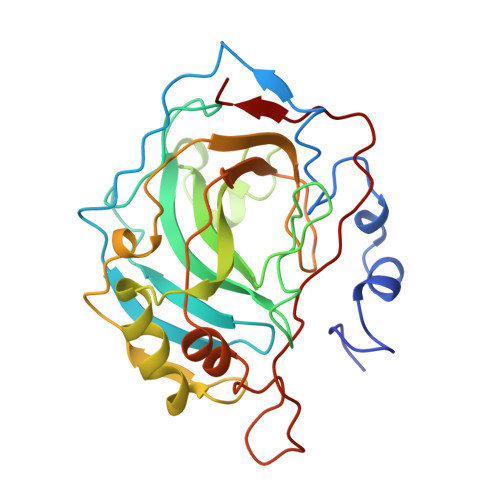Structural and kinetic analysis of the chemical rescue of the proton transfer function of carbonic anhydrase II.
Duda, D., Tu, C., Qian, M., Laipis, P., Agbandje-McKenna, M., Silverman, D.N., McKenna, R.(2001) Biochemistry 40: 1741-1748
- PubMed: 11327835
- DOI: https://doi.org/10.1021/bi002295z
- Primary Citation of Related Structures:
1G0E, 1G0F - PubMed Abstract:
Histidine 64 in human carbonic anhydrase II (HCA II) functions in the catalytic pathway of CO(2) hydration as a shuttle to transfer protons between the zinc-bound water and bulk water. Catalysis of the exchange of (18)O between CO(2) and water, measured by mass spectrometry, is dependent on this proton transfer and was decreased more than 10-fold for H64A HCA II compared with wild-type HCA II. The loss of catalytic activity of H64A HCA II could be rescued by 4-methylimidazole (4-MI), an exogenous proton donor, in a saturable process with a maximum activity of 40% of wild-type HCA II. The crystal structure of the rescued complex at 1.6 A resolution shows 4-MI bound in the active-site cavity of H64A HCA II, through pi stacking interactions with Trp 5 and H-bonding interactions with water molecules. In this location, 4-MI is about 12 A from the zinc and approximates the observed "out" position of His 64 in the structure of the wild-type enzyme. 4-MI appears to compensate for the absence of His 64 and rescues the catalytic activity of the H64A HCA II mutant. This result strongly suggests that the out conformation of His 64 is effective in the transfer of protons between the zinc-bound solvent molecule and solution.
Organizational Affiliation:
Department of Biochemistry and Molecular Biology, University of Florida, Gainesville, FL 32610, USA.

















